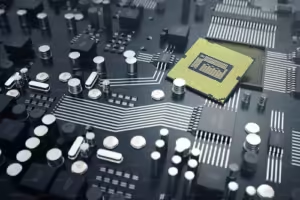
Neurotrophic Engineering
Neurotrophic engineering is an emerging field at the intersection of neuroscience, engineering, and regenerative medicine. It focuses on developing innovative strategies to promote the growth, repair, and regeneration of the nervous system. By leveraging the intricate knowledge of neural development and the power of engineering approaches, neurotrophic engineering aims to address neurological disorders, spinal cord injuries, and other conditions that affect the nervous system. In this article, we will explore the principles of neurotrophic engineering, its potential applications, and the remarkable advancements that are reshaping the future of neural regeneration.
Understanding Neurotrophins:
At the core of neurotrophic engineering are neurotrophins, a family of proteins that play a crucial role in the growth, survival, and connectivity of neurons in the nervous system. Neurotrophins, such as nerve growth factor (NGF), brain-derived neurotrophic factor (BDNF), and glial cell line-derived neurotrophic factor (GDNF), interact with specific receptors on neurons, initiating signaling pathways that promote neuronal growth, synapse formation, and plasticity.
Principles of Neurotrophic Engineering:
Neurotrophic engineering employs various strategies to enhance neural regeneration and functional recovery:
Biomaterial Scaffolds:
Biomaterial scaffolds provide physical support and guidance for regenerating nerves. These scaffolds can be engineered to mimic the natural extracellular matrix, providing a conducive environment for neuronal growth and axonal guidance. They can also be loaded with neurotrophic factors to enhance cellular survival and promote axonal outgrowth.
Controlled Drug Delivery:
Neurotrophic factors can be encapsulated within biodegradable polymer systems to achieve sustained release at the injury site. This controlled delivery ensures a continuous supply of neurotrophins, enhancing the survival and growth of regenerating neurons.
Electrical Stimulation:
Electrical stimulation techniques, such as direct current stimulation and electrical fields, can be applied to stimulate neuronal growth and guide axonal regeneration. These electrical cues can promote neuronal migration, synapse formation, and the reestablishment of functional neural circuits.
Tissue Engineering and Cellular Therapies:
Tissue engineering approaches involve the fabrication of three-dimensional structures that combine cells, biomaterials, and growth factors to regenerate damaged neural tissues. Stem cell-based therapies, including neural stem cells and induced pluripotent stem cells, hold potential for replacing damaged or lost neurons and promoting neural repair.
Applications of Neurotrophic Engineering:
Neurotrophic engineering holds promise for a wide range of neurological conditions and injuries:
Spinal Cord Injury:
Neurotrophic engineering aims to bridge the gaps in spinal cord injuries, promoting axonal regeneration and functional recovery. Biomaterial scaffolds, electrical stimulation, and cellular therapies are being explored to restore connectivity and improve motor and sensory functions.
Neurodegenerative Disorders:
Diseases like Parkinson’s, Alzheimer’s, and Huntington’s are characterized by the loss of specific neurons. Neurotrophic engineering strategies can offer therapeutic approaches to promote neuronal survival, slow down degeneration, and potentially restore lost function.
Peripheral Nerve Injury:
Nerve injuries, such as those resulting from trauma or surgical procedures, can be treated using neurotrophic engineering approaches. Biomaterial scaffolds and controlled drug delivery systems can guide and enhance peripheral nerve regeneration, promoting functional recovery.
Stroke Rehabilitation:
Neurotrophic engineering techniques, including electrical stimulation and cellular therapies, show promise in stroke rehabilitation. They aim to stimulate neuronal rewiring, enhance functional recovery, and improve motor and cognitive outcomes.
Also Read: The Accelerating Wave: 5G Network Expansion Revolutionizes Connectivity
Have you ever wondered how researchers address the challenges of targeted delivery when using CRISPR-based gene editing in neurotrophic engineering?
Targeted delivery of CRISPR-based gene editing tools to the nervous system remains a significant challenge in neurotrophic engineering. Researchers are actively exploring various strategies to address this issue. Here are some approaches being investigated:
Viral Vectors:
Viral vectors are commonly used to deliver CRISPR components to target cells. Researchers are engineering viruses, such as adeno-associated viruses (AAVs), to carry the CRISPR machinery specifically to neural tissues. By modifying the viral capsids, they can achieve neuronal tropism, enabling targeted delivery to the central nervous system (CNS) or peripheral nerves. This approach shows promise for precise gene editing in specific regions of the nervous system.
Non-viral Delivery Systems:
Non-viral delivery systems, such as lipid nanoparticles and polymer-based carriers, are being explored as alternatives to viral vectors. These systems can encapsulate CRISPR components and facilitate their delivery to neural tissues. Researchers are developing nanoparticles with surface modifications that enhance their ability to cross the blood-brain barrier (BBB) and efficiently deliver CRISPR payloads to the CNS.
Cell-Type Specific Promoters:
Utilizing cell-type specific promoters can achieve targeted gene editing in specific neuronal populations. By combining CRISPR with genetic elements that drive gene expression selectively in certain cell types, researchers can restrict the activity of CRISPR to desired neural cell populations. This approach minimizes off-target effects and improves the precision of gene editing.
Electroporation and Physical Methods:
Electroporation involves applying electric pulses to cells to create temporary pores in their membranes, allowing the entry of CRISPR components. Researchers are optimizing electroporation parameters to achieve efficient and targeted delivery of CRISPR reagents to neural tissues. Physical methods like microinjection and biolistic particle delivery systems are also being explored to directly introduce CRISPR components into specific regions of the nervous system.
Ex vivo Editing:
In some cases, researchers are exploring ex vivo gene editing approaches. Neural cells or tissues are extracted from the patient, edited using CRISPR, and then re-implanted back into the nervous system. This approach allows for precise gene editing before transplantation, circumventing the challenges of in vivo delivery.
BBB Penetration:
The blood-brain barrier presents a significant hurdle for delivering CRISPR components to the CNS. Researchers are investigating strategies to modify or temporarily open the BBB to allow the passage of CRISPR payloads. These include the use of focused ultrasound, nanoparticles, and specific chemical agents that transiently disrupt the BBB and facilitate targeted delivery.
Light-Induced Gene Editing:
Optogenetics, which combines light-sensitive proteins with CRISPR, offers the potential for precise spatiotemporal control of gene editing. Researchers are engineering light-activated CRISPR systems that can be precisely activated in specific neural circuits using light stimulation. This approach allows for targeted gene editing within specific regions of the nervous system.
These approaches and ongoing research efforts in targeted delivery aim to enhance the efficiency, specificity, and safety of CRISPR-based gene editing in neurotrophic engineering. By overcoming the challenges of delivery, researchers can unlock the full potential of CRISPR for precise and effective gene editing in the nervous system, paving the way for innovative therapies for neurological disorders and neural regeneration.
Also Read: 14 New Technological Forecasts for 2030 That Will Reform The World
Recent advancements in neurotrophic engineering have shown great promise in the field of neural regeneration. Here are a few notable developments:
CRISPR-Based Gene Editing:
The revolutionary gene-editing tool, CRISPR-Cas9, has opened up new avenues in neurotrophic engineering. Researchers are using CRISPR to modify genes associated with neurotrophic factors, allowing for precise control over their expression and enhancing their therapeutic potential. This technology holds promise for targeted therapies in neurodegenerative disorders and spinal cord injuries.
Optogenetics:
Optogenetics combines genetic engineering with light-sensitive proteins to control neural activity with high precision. By delivering light to specific regions of the brain or spinal cord, researchers can stimulate or inhibit neurons, fostering neural growth and rewiring. Optogenetics offers new possibilities for guiding axonal regeneration and restoring neural function in various neurological conditions.
3D Bioprinting:
The field of 3D bioprinting has made significant strides in creating complex three-dimensional structures that mimic the architecture of neural tissues. By combining cells, biomaterials, and growth factors, researchers can fabricate scaffolds that provide a supportive environment for neuronal growth and regeneration. 3D bioprinting holds promise for creating customized tissue-engineered constructs for neural repair.
Electrical Stimulation and Neuromodulation:
Advances in electrical stimulation and neuromodulation techniques have demonstrated their potential to enhance neural regeneration. Transcranial magnetic stimulation (TMS), transcranial direct current stimulation (tDCS), and deep brain stimulation (DBS) are being explored to promote neuronal growth, modulate neural circuits, and improve functional recovery in conditions such as stroke, spinal cord injury, and neurodegenerative disorders.
Neurotrophin-Mimetic Peptides:
Researchers are developing neurotrophin-mimetic peptides as an alternative to traditional neurotrophic factors. These peptides mimic the structure and function of neurotrophins, promoting neuronal survival, growth, and synaptic plasticity. Neurotrophin-mimetic peptides offer advantages such as improved stability, targeted delivery, and reduced side effects compared to native neurotrophins.
Bioengineering and Organ-on-a-Chip Technologies:
Bioengineering approaches, including organ-on-a-chip technologies, enable researchers to create microscale models of neural tissues and study their behavior in a controlled environment. These platforms allow for the investigation of cell-cell interactions, neuronal development, and response to various stimuli. Organ-on-a-chip technologies offer a valuable tool for understanding neural regeneration and screening potential therapies.
Combination Therapies:
Researchers are exploring the synergistic effects of combining multiple neurotrophic engineering approaches. For example, combining biomaterial scaffolds with electrical stimulation or drug delivery systems can enhance the regenerative potential and functional recovery. Combinatorial therapies hold promise for maximizing the effectiveness of neurotrophic engineering strategies.
These recent advancements in neurotrophic engineering highlight the rapid progress being made in the field. They bring us closer to developing innovative treatments for neurological disorders, spinal cord injuries, and other conditions affecting the nervous system. With ongoing research and technological advancements, neurotrophic engineering continues to push the boundaries of neural regeneration and offers hope for improving the lives of individuals with neurological impairments.
Challenges and Future Directions:
While neurotrophic engineering holds tremendous potential, several challenges need to be addressed:
Delivery Methods:
Efficient and targeted delivery of neurotrophic factors to the injured site remains a challenge. Developing delivery methods that ensure optimal dosage, sustained release, and appropriate temporal and spatial distribution of neurotrophins is essential.
Integration and Functional Recovery:
Regenerating neurons need to integrate into existing neural circuits and establish functional connections. Encouraging precise axonal guidance and promoting synapse formation are critical for functional recovery.
Long-Term Stability:
Ensuring the long-term stability and survival of regenerated neurons and maintaining the functionality of engineered neural tissues are ongoing areas of research.
In summary, Neurotrophic engineering represents a powerful multidisciplinary approach to neural regeneration and functional recovery. By combining the principles of neuroscience, engineering, and regenerative medicine, researchers are making remarkable strides in addressing neurological disorders and injuries. While there are challenges to overcome, the potential for restoring lost neural function and improving the quality of life for those affected by neurological conditions is immense. As neurotrophic engineering continues to advance, it holds the promise of reshaping the landscape of neural regeneration and unlocking new frontiers in neuroscience and medicine.






